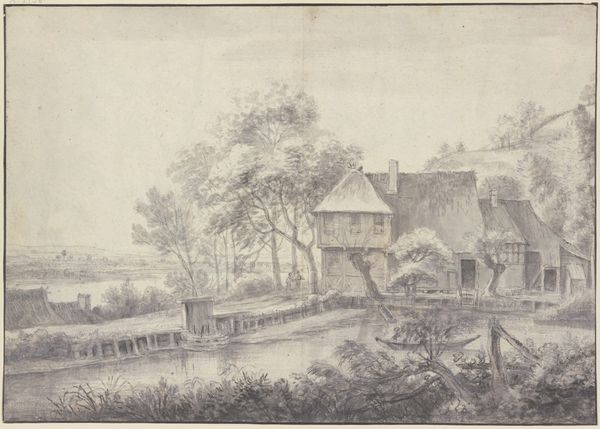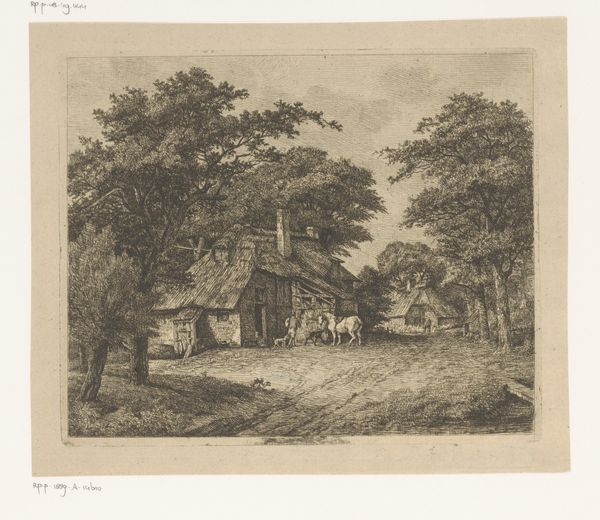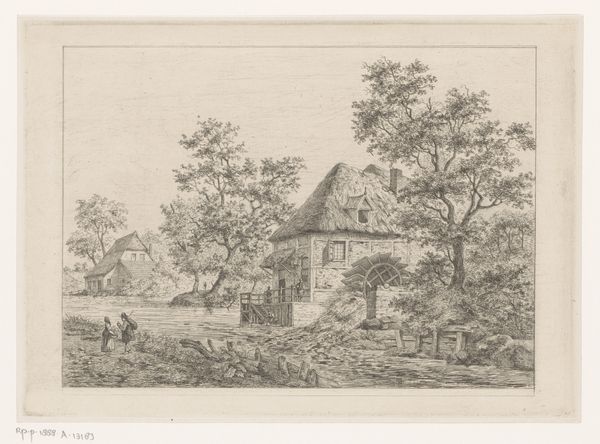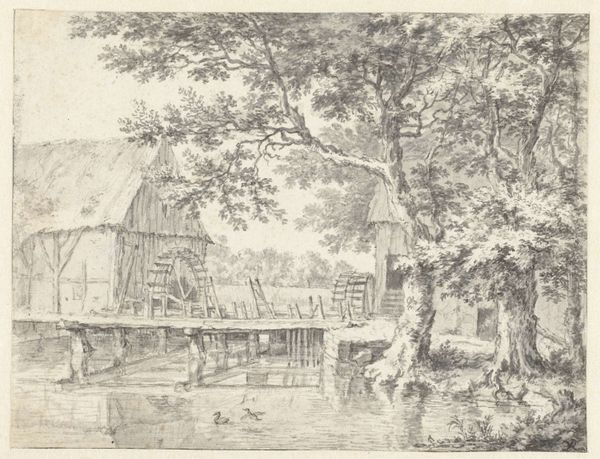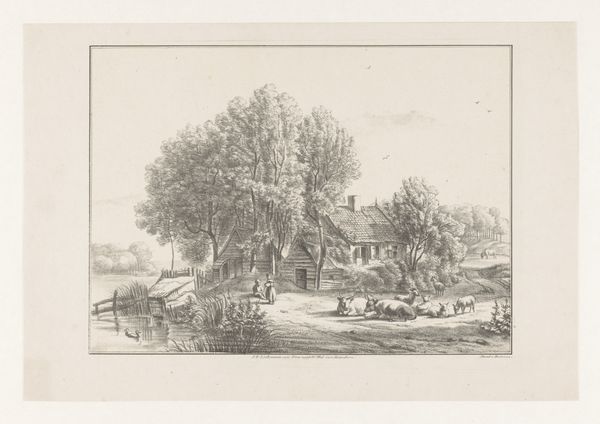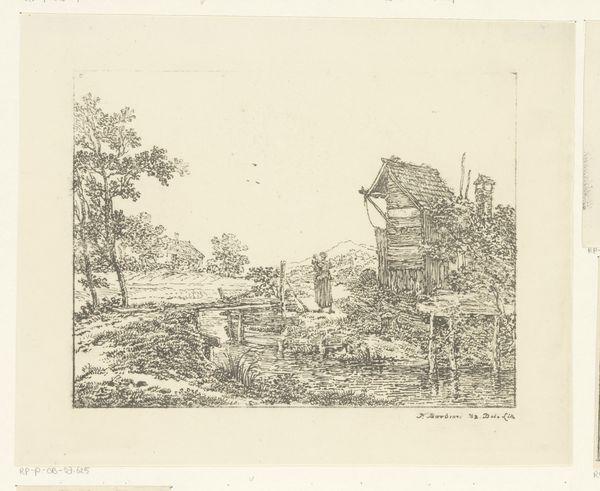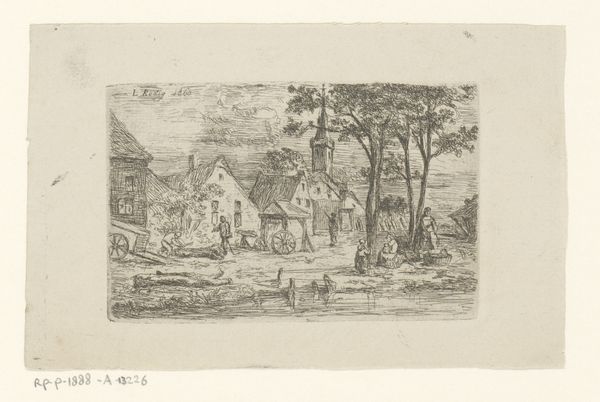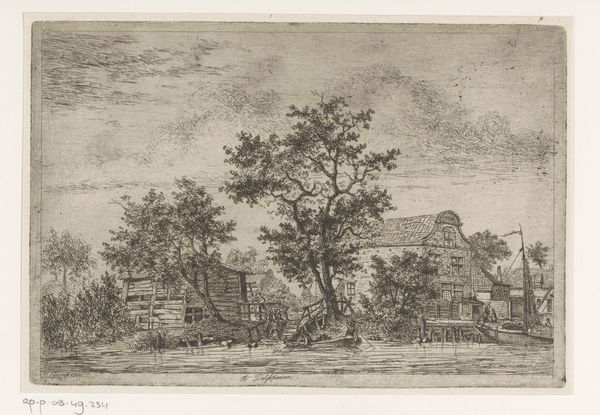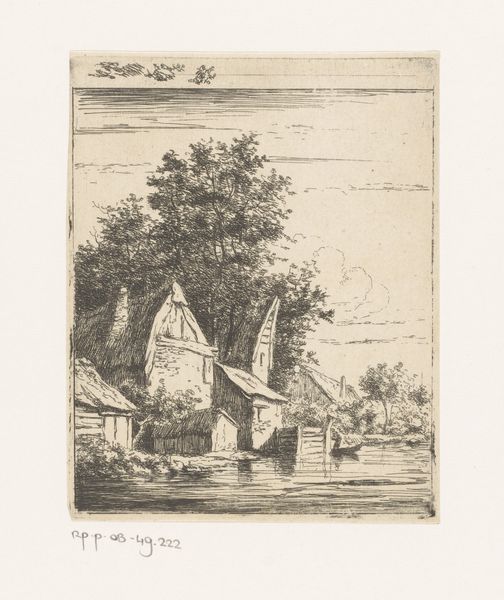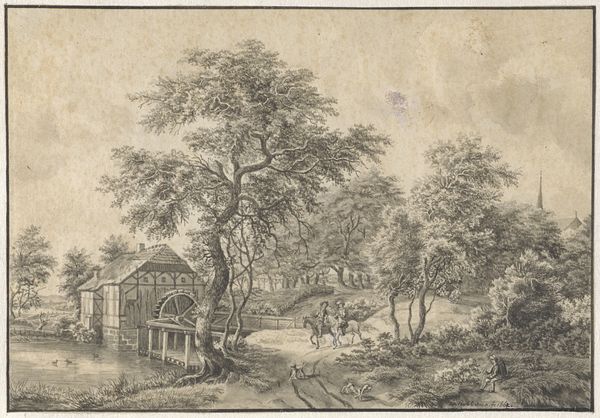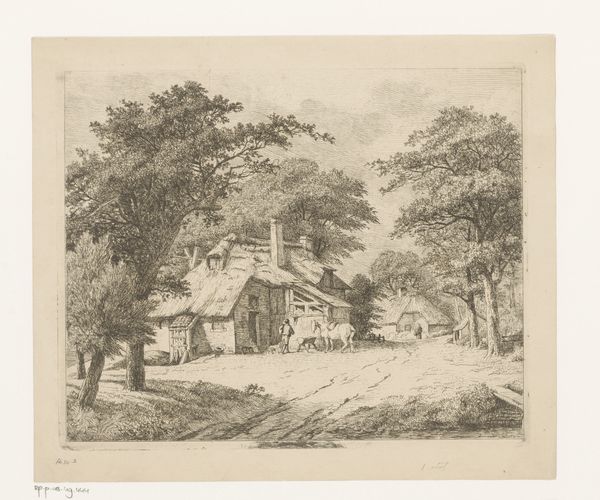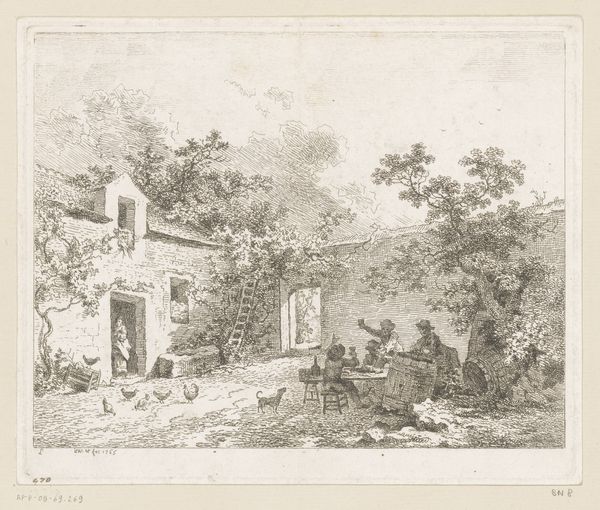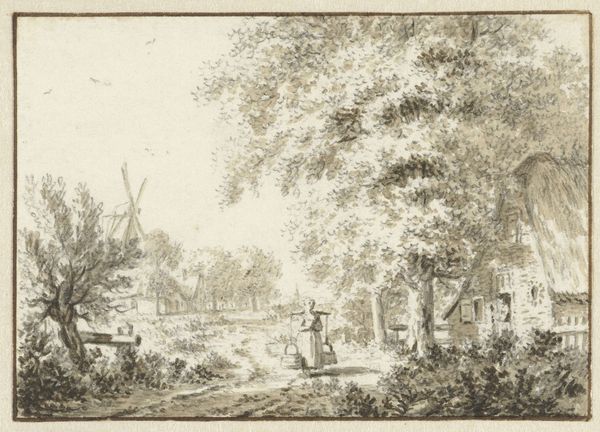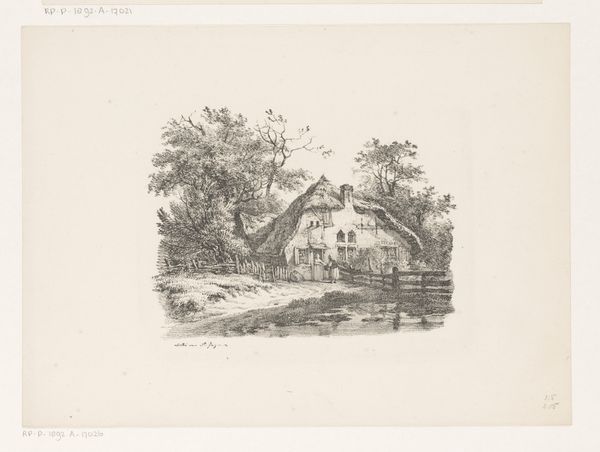
Dimensions: height 159 mm, width 199 mm
Copyright: Rijks Museum: Open Domain
Jean Jacques Le Veau created this etching of a watermill in the 18th century. Etching is an intaglio printmaking method, where lines are incised into a metal plate using acid to create the image. Le Veau would have coated a copper plate with a waxy, acid-resistant ground before drawing the composition with a sharp needle, exposing the metal beneath. The plate would then have been immersed in acid, which bites into the exposed lines, creating grooves. Ink is applied to the plate, filling these lines, and the surface is wiped clean. Finally, the print is made by pressing paper against the plate, transferring the ink and the image onto the paper. The linear quality of the etching process lends itself well to the depiction of textures and surfaces, seen here in the rendering of the wooden mill and surrounding foliage. The print is a product of both skillful handwork and chemical processes; it invites consideration of the complex relationship between labor, landscape, and the emerging industrialization of the 1700s. Appreciating these technical and historical aspects enhances our understanding of the artwork's layered meanings.
Comments
No comments
Be the first to comment and join the conversation on the ultimate creative platform.
